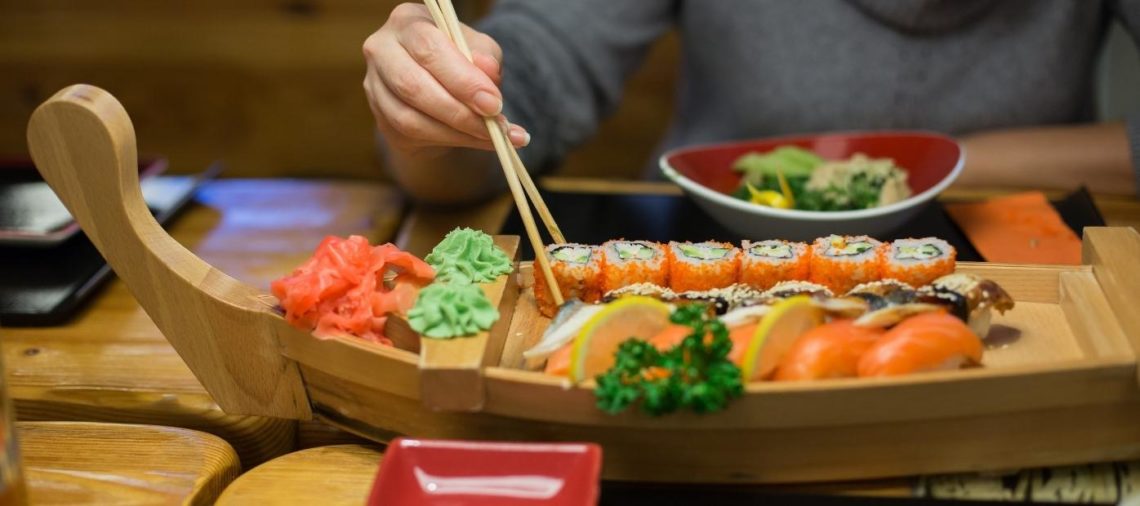What’s Japanese food like? The Japanese culinary experience is surprising. Do not expect to go to Japan and eat the food you know from Europe or America – the taste of Japanese food is different from what you learned, even if you are a sushi fan. I ate delicious dishes and, likewise, absolutely impossible things and somehow incomprehensible for my taste buds.
What is okazu, and how is it related to Japanese food?
Dishes are called okazu, and a bowl of rice accompanies them every time. Okazu may contain meat, fish, vegetables, or tofu. In general, when you order at the restaurant, you will take the main dish and a soup. Soup is always eaten at the end, which is understandable because it always comes extremely hot. The Japanese eat exclusively with chopsticks, but you can ask for forks and be served immediately if this is a problem. Even the noodles soup (or the ramen) is served with chopsticks: the bowl is held in both hands, the liquid is drunk, and the noodles are led with chopsticks and slurped.
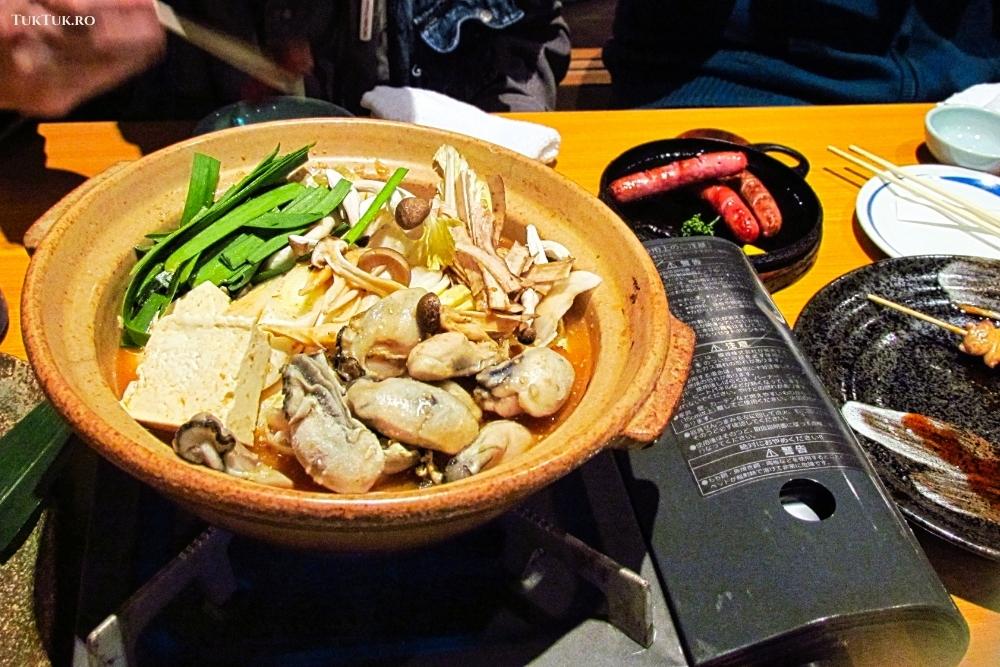
Don’t get angry if you’re at the table with some Japanese and they eat noisily: it’s a tradition to slurp the soup with noise. The louder, the better – this indicated that ramen is good. Noodles are of two kinds, soba and udon (the latter being thicker). The noodles are served in other ways than the ramen, especially cooked on hot plates, teppanyaki style, or delicious okonomiyaki (a kind of omelet pizza or Japanese pancake).
The Japanese food is prepared in front of you
Food can be cooked in several ways. It can be raw (sashimi), grilled, boiled, steamed, very fried, marinade, etc. As the Japanese are insulars, fish and seafood are the main ingredients in their kitchen. Meat – usually pork or beef – is quite expensive, as are the fruits, representing true delicacies. For example, if you visit a Japanese, half a melon is a gift that will be properly appreciated.
Rice is always served simple, in a bowl. Foreigners may seem tasteless, and you tend to season him with sauces (which the Japanese do not abuse). But it’s sacrilege to pour something over the rice in the bowl. I got a nasty look when I poured soy on top, not knowing that you have to put the soy on the plate, and then the rice is soaked in it.
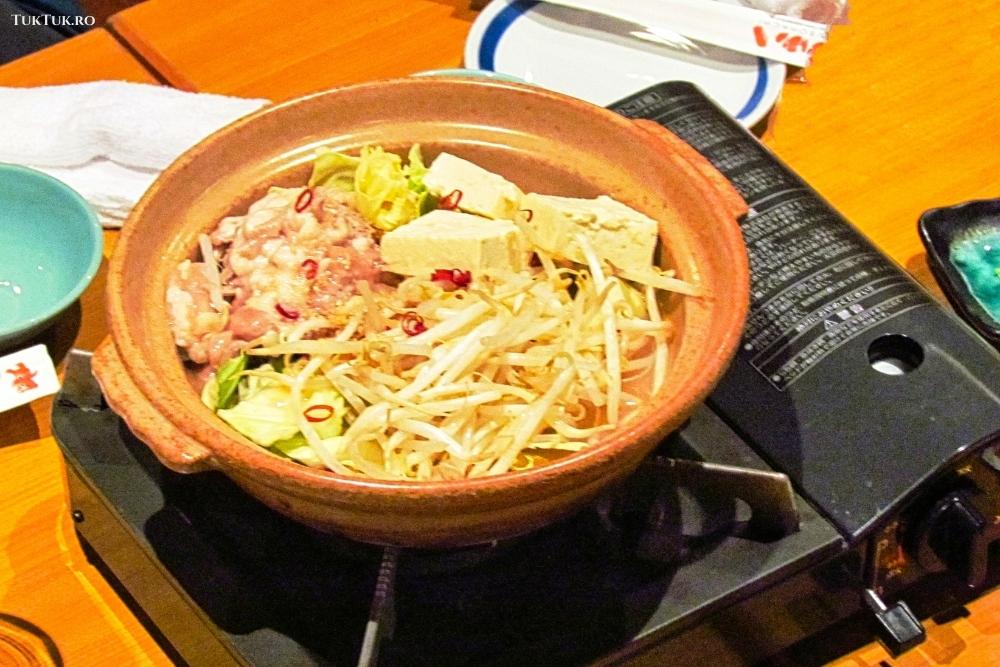
There are thousands of restaurants in Japan, some of them very good, if you think, for example, that Tokyo is number one in top cities with most Michelin stars restaurants. Many of them are specialized. For example, sushi places do not serve other dishes besides sushi and sashimi, which are presented elegantly and thoroughly to know what choice to make. The dishes are always very fresh.
Before they bring the food, you will get a hot and wet towel (oshibon), for wiping your hands (not the face). The bowl is held in the left hand and the chopsticks in the right (so the Japanese children taught about left and right). The main sauce is soy, but it does not simply pour over the dishes. As I said, they use plates in which the food pieces are dipped. Do not ever let the chopsticks stuck in rice because this symbolizes incense sticks infused during funeral rites. Do not pass food from one plate to another or from a stick to another – this gesture would mean lifting remaining bones after incineration. Do not show off chopsticks, and don’t bite out of them. Before starting eating, a toast is made (they say kampai). It’s rude to pour yourself drink into the glass. You usually pour the table, neighbor, and he immediately returns the service if you have the glass empty.
Vegetarians can find suitable dishes or even specific restaurants, but they should not completely trust the idea of “meat-free”, because the Japanese do not respect it in everything. For example, they might ask for a vegetarian menu to discover chicken inside later. If they ask the waiter about it, they might receive an honest answer: “cichin ochei” (chicken OK)
Table habits in Japan. What can you drink in Japan
Japanese traditional drinks are sake and sonchu. Sake is an alcoholic fermentation of rice (12-20 degrees), a rice wine. There are many varieties. At the first sip, sake seems like a soft alcoholic drink. But more glasses will quickly cheer you up. I liked sonchu more; it is distilled from barley, sweet potato, or rice. As a derivative of rice, sake is not served simultaneously with the rice itself at traditional meals. You can serve sake warm or cold, in small or bigger glasses, from which you pour several times in your little cup.
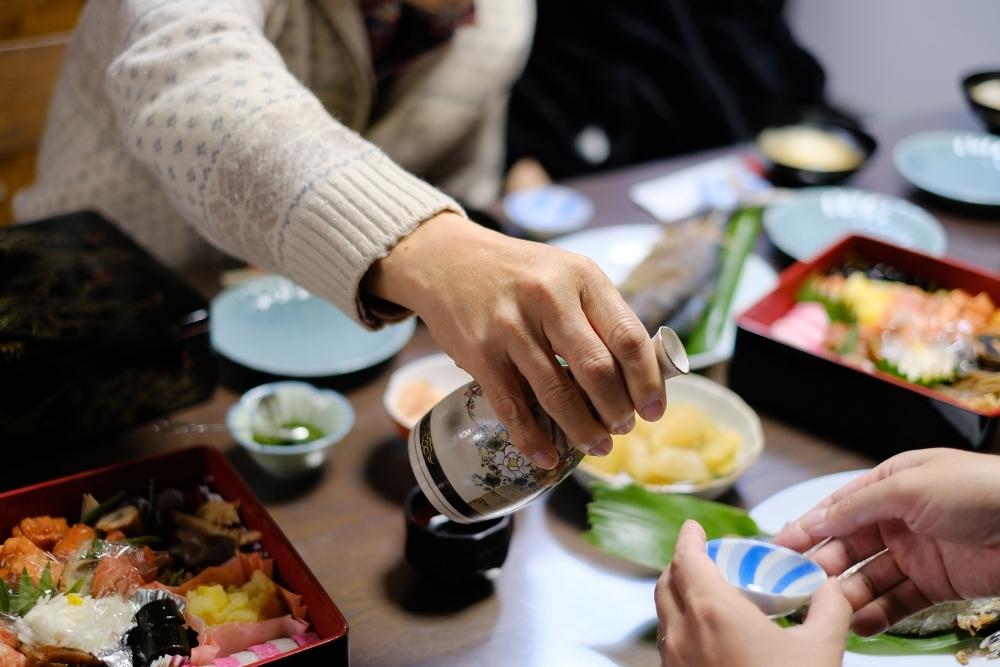
The Japanese wine is easy, but it will not impress you; the red one is a sympathetic compote, served cold, contrary to the former habits of the world’s wine areas. The Japanese drink a lot of green tea, which they consider the secret of long life and keeping a pleasant physique at the age.
Restaurants have standard tables or traditional low tables (usually, they have a place to put your feet or… not). At the entrance of such a restaurant, you take your shoes off, and you sit at the table with your feet under yourself or under the table. The Japanese go a lot in restaurants, often celebrating various anniversaries. And sometimes they drink too much.
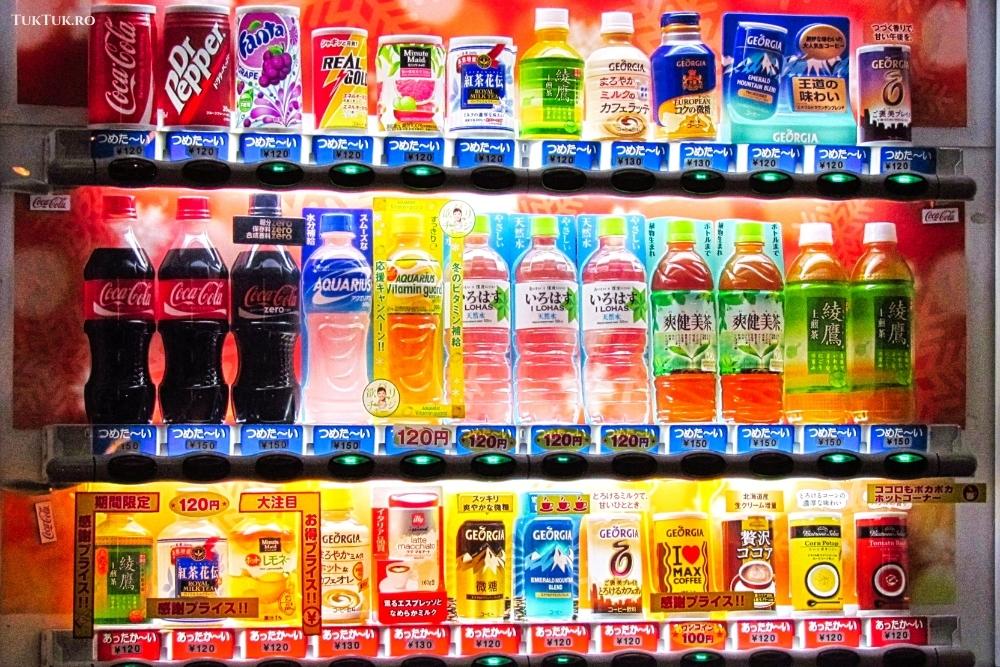
In Japanese restaurants, a tip is an unacceptable term. In other words, do not tip! (as not even to taxis, hotels, etc.). If you dine with a group of Japanese, the bill will be shared equally, no matter what each has consumed. It’s generally considered rude to eat on the street or in public spaces, but it’s okay to eat on trains over long distances. There are specific places where you can sit and eat (tachi-gui) anything in cities, including soups or sushi. In supermarkets like Seven / Eleven, some rice cakes (round or triangular) stuffed with meat or fish, called onigiri, are very popular. Also, there are plenty of automatic beverage machines in the streets: basically, you never get thirsty in Japan. These vending machines sell at 120-180 yen (1-2 euro) a wide range of soft drinks, teas, cold and hot coffees, even beer or sake.
Finally, prices in restaurants vary, of course, depending on the type of restaurant. But for a decent one, the main course is between 300-600 yen (3-6 euro). The more sophisticated ones are up to 1000 yen. A cup of sake or shochu costs about 400-500 yen (4-5 euros), and a beer (I preferred the excellent Asahi) is all around 500 yen.
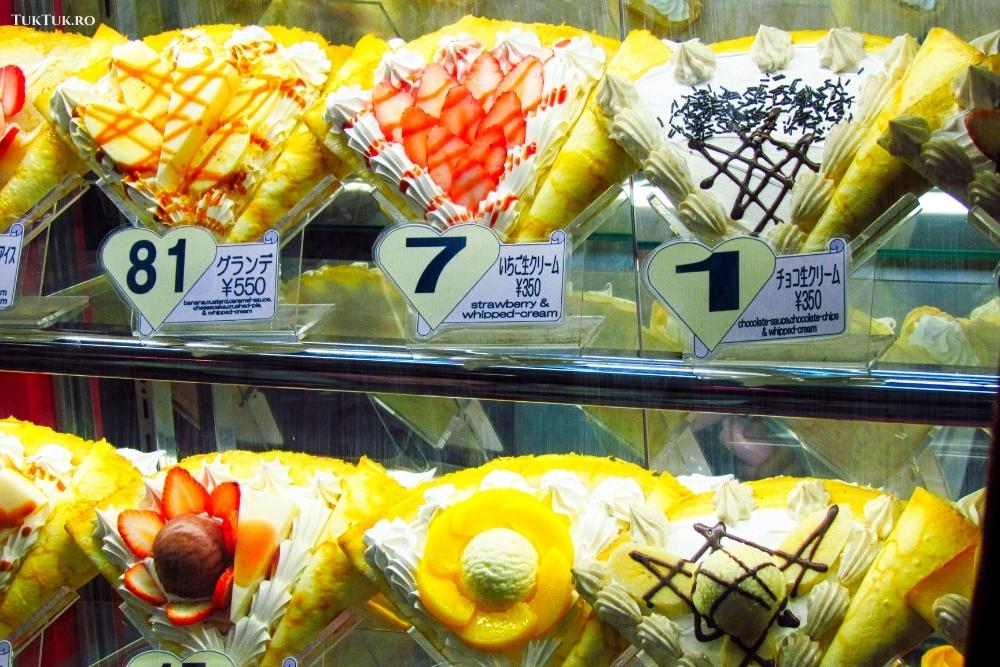
Japanese desserts are pretty weird—at least the traditional ones. Otherwise, you can find delicious cakes, especially those made in western recipes. For example, the Japanese adore pancakes: you will encounter a lot of pancakes stores displaying the products made with the most diverse ingredients. They eat a lot of ice cream and doughnuts but, generally speaking, I didn’t notice restaurants to have lots of desserts in their menus.
A few words about the street food: I’ve tried something, and I found the taste coming from another planet. You don’t get anything you’d expect to find, even at a mere skewer. I also found it strange that the Japanese do not use salt, which leads the taste of some foods to be rather neutral or bitter.
My favorite Japanese food was okonomiyaki.
You may also like: A visit in Harajuku, the teens’ insane fashion district of Tokyo

